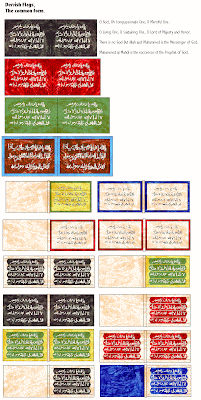
The Mountain Meadows massacre was a series of attacks on the Baker-Fancher emigrant wagon train, at Mountain Meadows in Southern Utah. The attacks culminated on September 11, 1857 in the mass slaughter of the emigrant party by the Iron County district of the Utah Territorial Militia and some local Indians.

The wagon train, composed almost entirely of families from Arkansas, was bound for California on a route that passed through the Utah Territory during a turbulent period later known as the Utah War. After arriving in Salt Lake City, the Baker-Fancher party made their way south, eventually stopping to rest at Mountain Meadows. While the emigrants were camped in the meadow, nearby militia leaders including Isaac C. Haight and John D. Lee made plans to attack the wagon train. Intending to give the appearance of Indian aggression, their plan was to arm some Southern Paiute Indians and persuade them to join with a larger party of militiamen, disguised as Indians, in an attack.

During the initial assault on the wagon train, the emigrants fought back and a five-day siege ensued. Eventually fear spread among the militia's leaders that some emigrants had caught sight of white men, and had probably discovered who their attackers really were. This resulted in an order by militia commander William H. Dame for the emigrants' annihilation.

Running low on water and provisions, the emigrants allowed a party of militiamen to enter their camp who assured them of their safety and escorted them out of their hasty fortification. After walking a distance from the camp, the militiamen, with the help of auxiliary forces hiding nearby, attacked the emigrants. Intending to leave no witnesses of Mormon complicity in the attacks, and to prevent reprisals that would further complicate the Utah War, the perpetrators killed all the adults and older children (totaling about 120 men, women, and children). Seventeen children, all younger than seven, were spared.

Following the massacre the perpetrators hastily buried the victims, leaving their bodies vulnerable to wild animals and the climate. Local families took in the surviving children, and many of the victims' possessions were auctioned off. Investigations, temporarily interrupted by the American Civil War, resulted in nine indictments during 1874. Of the men indicted, only John D. Lee was tried in a court of law. After two trials Lee was convicted and executed. Today historians attribute the massacre to a combination of factors including both war hysteria and strident Mormon teachings. Scholars still debate whether senior Mormon leadership, including Brigham Young, directly instigated the massacre or if responsibility lies with the local leaders of Southern Utah.

The Texas–Indian Wars were a series of conflicts between settlers in Texas and Plains Indians. These conflicts began when the first settlers moved into Spanish Texas, and continued through Texas's time as part of Mexico, as its own nation, Republic of Texas, and did not end until 30 years after Texas joined the United States. the conflicts from 1820, just before Mexico gained independence from Spain,lasted until 1875, when the last free band of Plains Indians, the Comanches led by Quahadi warrior Quanah Parker, surrendered and moved to the Fort Sill reservation in Oklahoma.

The half-century struggle between the Plains Tribes and the Texans became particularly intense after the Spanish, and then Mexicans, left power in Texas, and the Republic of Texas, and then the United States, opposed the Tribes. Their war with the Plains Indians became one of deep animosity, slaughter, and, in the end, near-total conquest.

Although the outcome was lop-sided, the violence of the wars were not. When the whites recovered Cynthia Ann Parker at Pease River, Sul Ross observed that her recovery would be felt in every family in Texas, as every one of them had lost someone in the Indian Wars. Indeed, during the American Civil War, when the army was unavailable to protect the frontier, the Comanche and Kiowa pushed white settlements back over 100 miles on the Texas frontier.

st petersburg virginia eastern theatre of war

 The film has a lot to live up to of course, as it was a Western (in both senses) remake of Akira Kurosawa's classic The Seven Samurai. The story made an easy transplant to the Wild West and no wonder; Kurosawa, long considered one of the most "Western" Japanese directors, was a great admirer of John Ford.
The film has a lot to live up to of course, as it was a Western (in both senses) remake of Akira Kurosawa's classic The Seven Samurai. The story made an easy transplant to the Wild West and no wonder; Kurosawa, long considered one of the most "Western" Japanese directors, was a great admirer of John Ford.  The American remake has a great cast, most of whom had the bulk of their careers ahead of them - look down the list and, aside from Brynner, you'll see names that would pop up continually in tough-guy cinema throughout the 60s and 70s: McQueen, Bronson, Wallach, Coburn.
The American remake has a great cast, most of whom had the bulk of their careers ahead of them - look down the list and, aside from Brynner, you'll see names that would pop up continually in tough-guy cinema throughout the 60s and 70s: McQueen, Bronson, Wallach, Coburn. 



 One of the most rememborable films ever as regards the western.Bryner gave a great great performance.
One of the most rememborable films ever as regards the western.Bryner gave a great great performance.















